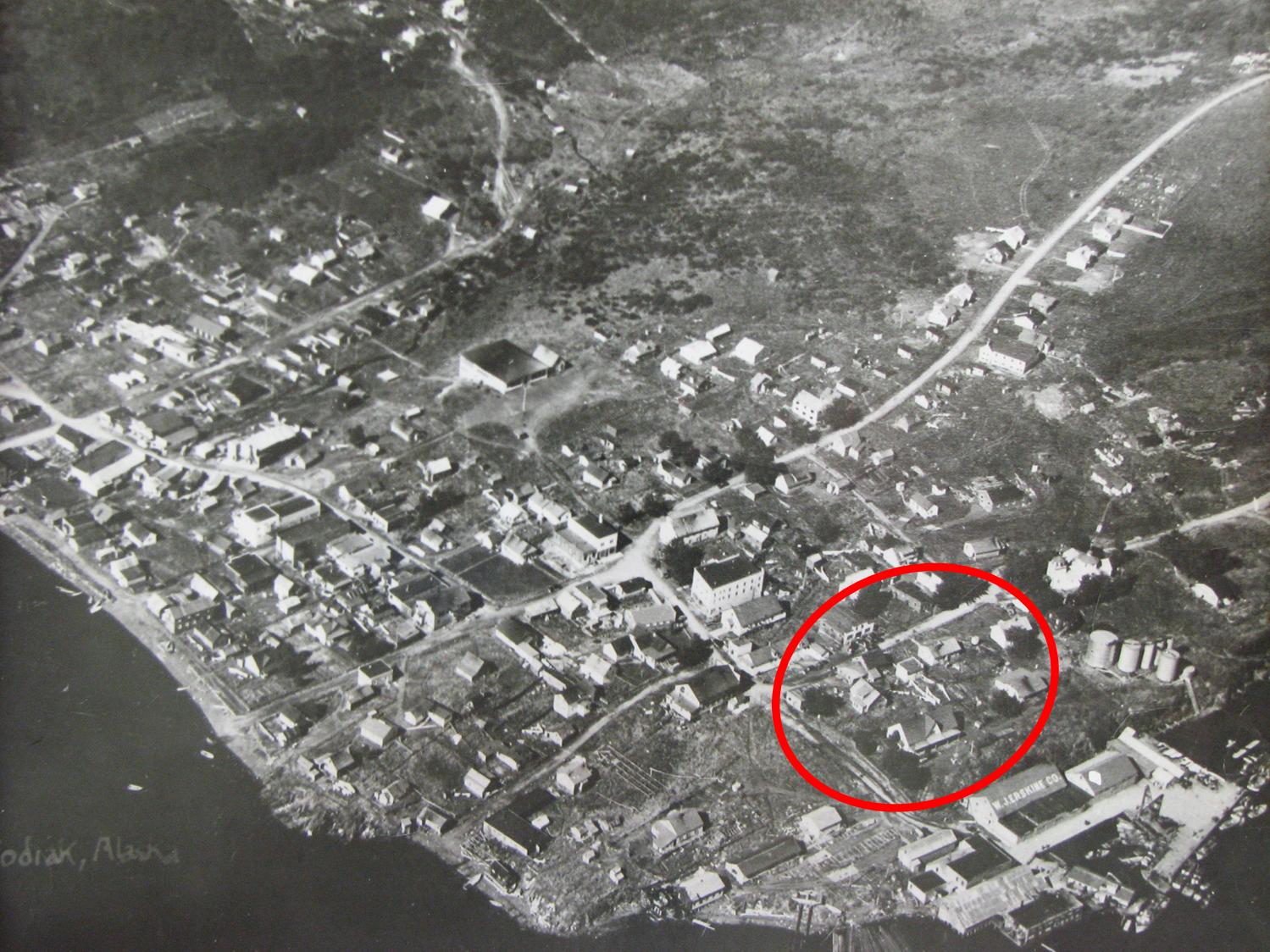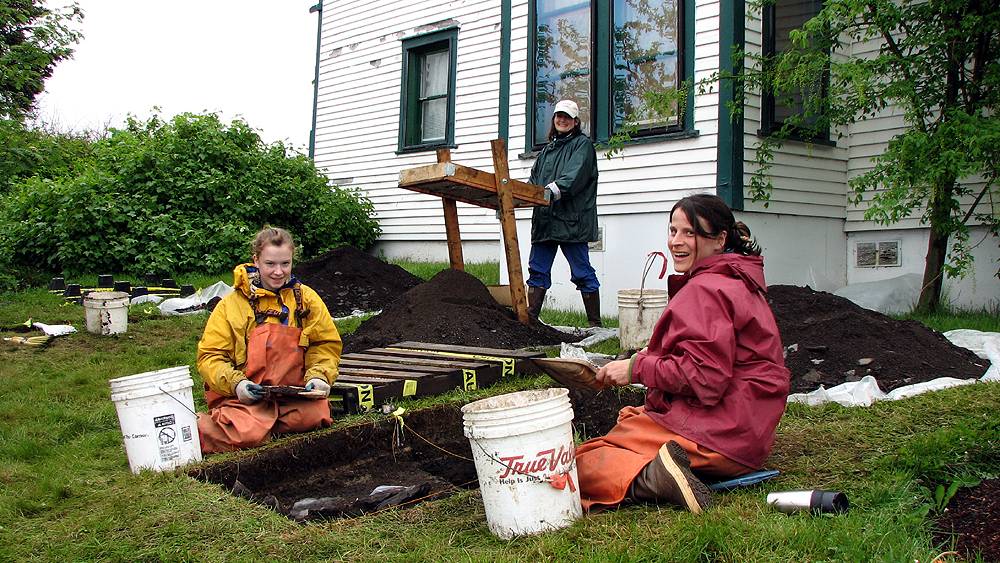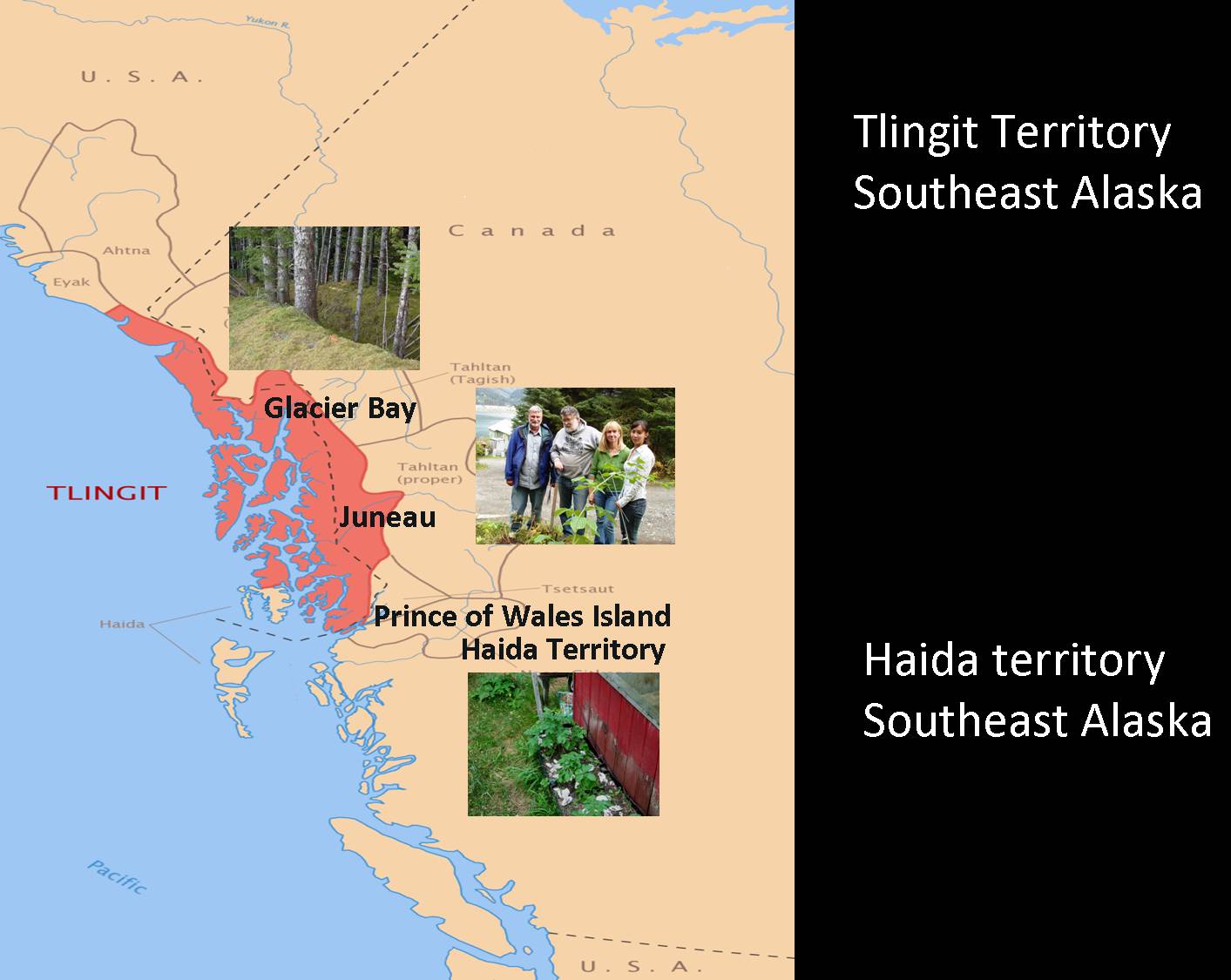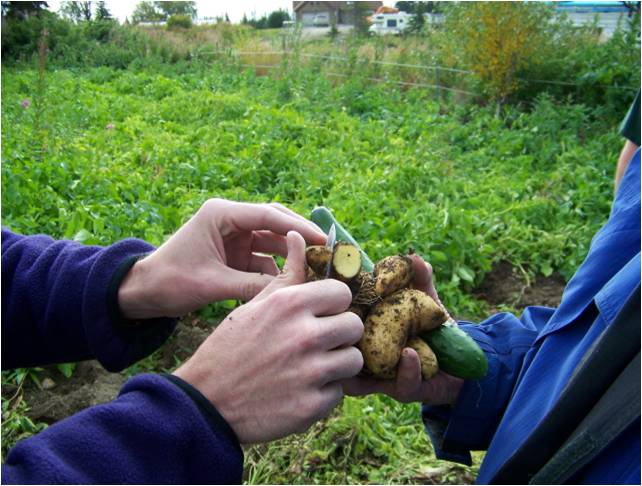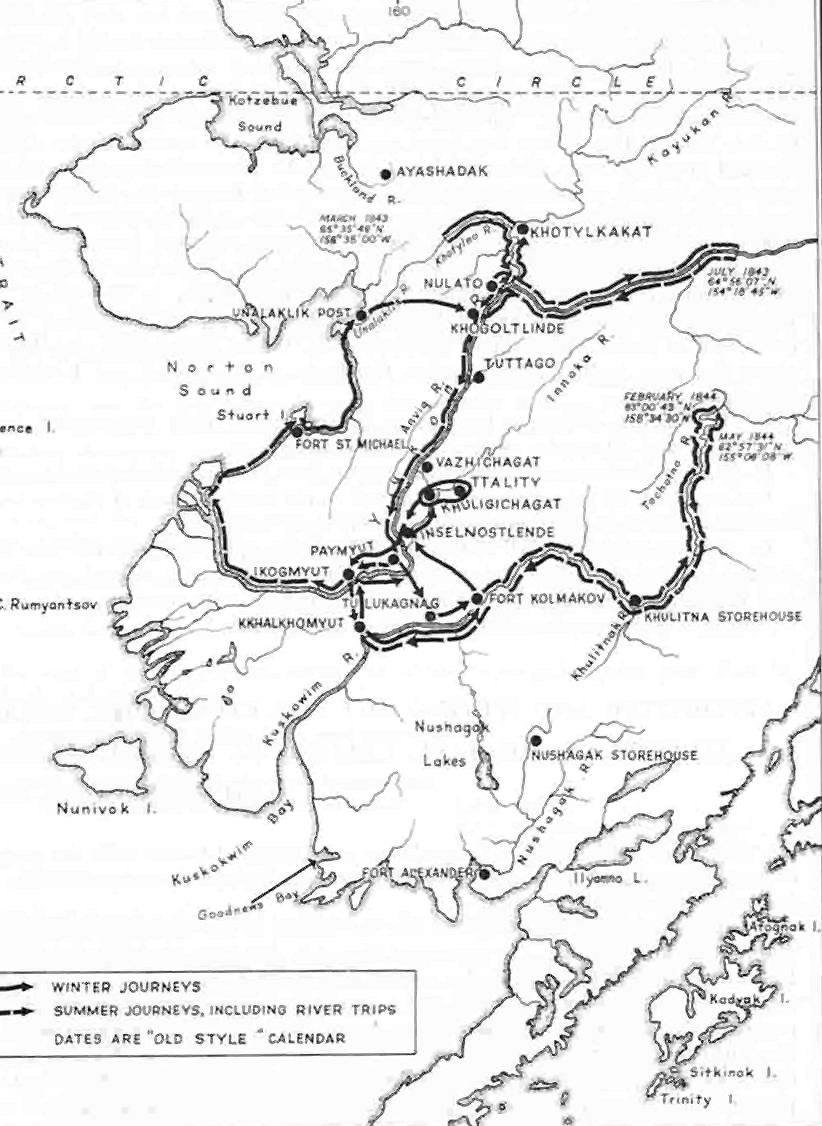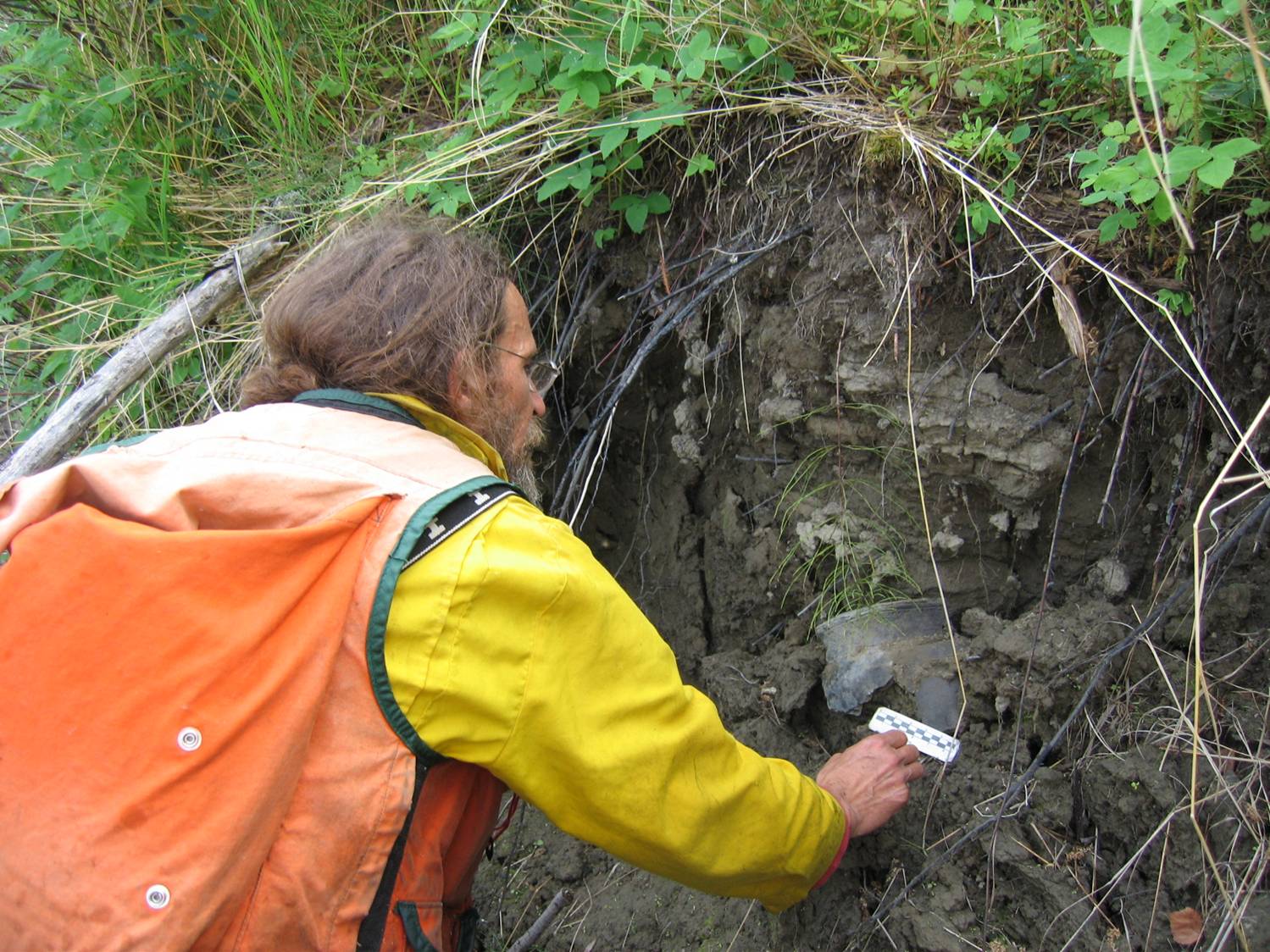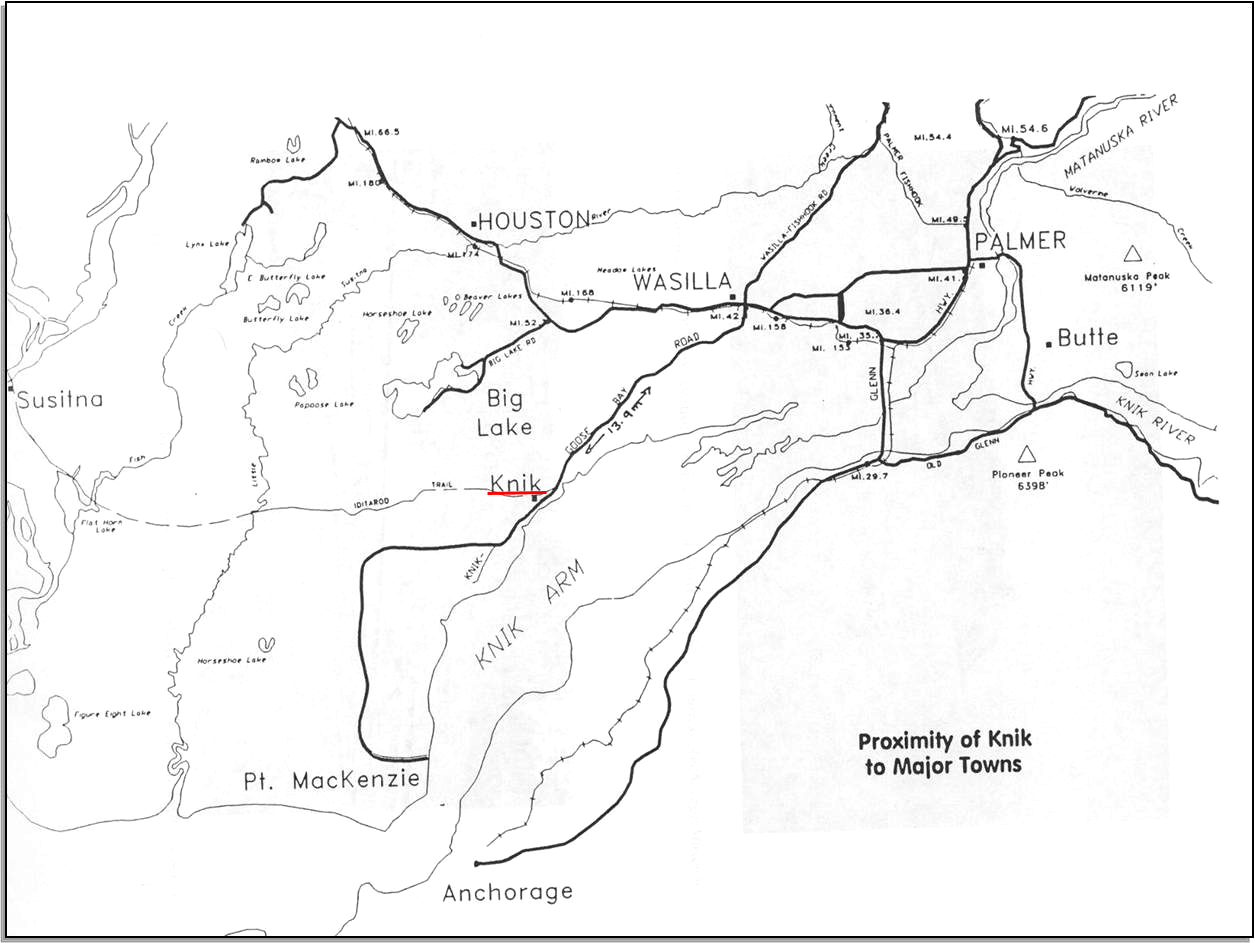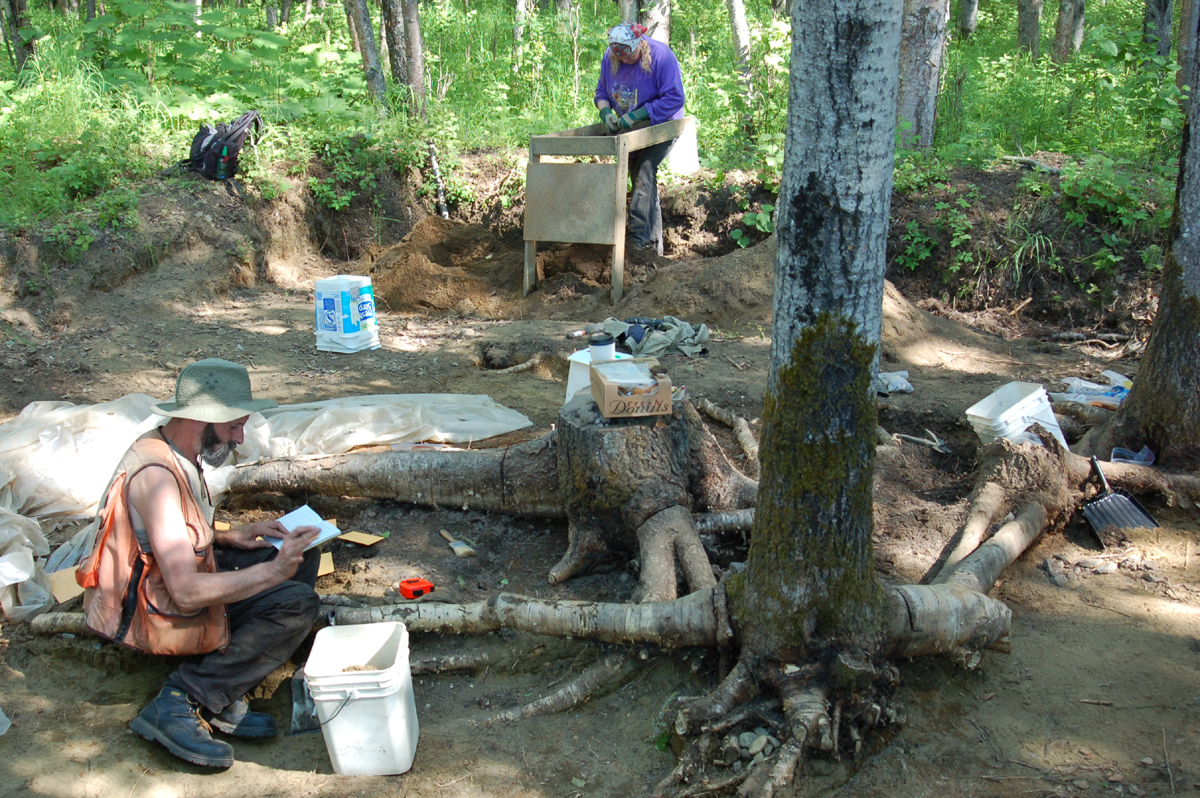Historical Archaeology in Alaska
Kodiak, Alaska: 4000 Years of Human Land Use at the Baranov Museum Grounds
Mark Cassell & Katie Oliver
Agricultural Beginnings: Tracing the Origins of Alaskan Tlingit and Haida People’s First Potatoes
Elizabeth Ann Kunibe
Island Village: An Alaskan Tale
Rita A. Miraglia
Power of Place and Place of Power: Sharing the Landscape in Southcentral Alaska
Fran Seager-Boss, Daniel Stone, and David Yesne
Kodiak, Alaska: 4000 Years of Human Land Use at the Baranov Museum Grounds
Mark Cassell and Katie Oliver
In 2008, the Baranov Museum in Kodiak, Alaska sponsored a community archaeology project involving dozens of students and local and visiting volunteers as part of the 200th anniversary of the AD 1808 Russian America Company magazin (warehouse), still standing today as the Baranov Museum. The archaeology of this very small piece of ground showed a much deeper and richer history than was expected, covering about 4000 years of human land use. Included were Kodiak’s 2008 present, the post-1964 tsunami “urban renewal” program, an early-mid 20th century garden path, early-20th century children’s toys, a building collapsed after the 1912 Katmai volcanic ashfall, a 19th century Alutiiq woven basket, two pre-magazin RAC buildings, and ancient Early Kachemak-period stone tool debris. The results show that the property is a wonderfully rich archaeological and historical resource documenting human presence since perhaps 2000 BC and extending to the present day.
Figure 1: The current Baranov Museum property shown on a 1953 aerial view of Kodiak.
Figure 2: Professional and lay archaeologists work together excavating Russian-American era materials at the Baranov Museum.
Author Biographies:
Mark Cassell is principal investigator at Territory Heritage Resource Consulting, a cultural resource management firm in Anchorage. Katie Oliver is executive director of the Baranov Museum in Kodiak.
Agricultural Beginnings: Tracing the Origins of Alaskan Tlingit and Haida People’s First Potatoes
Elizabeth Ann Kunibe
Potatoes are not being grown in Alaska today by chance. They are nurtured and traded by families. Through oral and written histories potatoes in Alaska have been traced back generations and represent a genetic line of the same potato that arrived several hundred years ago. Today there are several Native American potatoes being grown by Tlingit and Haida families in Alaska. The potatoes were genetically tested and it was discovered they are new unrecorded varieties. Previously it was thought Russian or Spanish explorers brought potatoes to the Northwest. New evidence shows this may not be true and Tlingit and Haida People had an extensive horticultural and agricultural background beyond hunting and gathering. Meeting with Tlingit and Haida People we are learning more about the Tlingit and Haida gardening past. Today there is a revitalization of these long forgotten gardens with health and nutrition in mind.
Figure 1: Map of Southeast Alaska showing a dormant Tlingit garden in Glacier Bay National Park, the Juneau garden where Maria’s potato was collected and the Kasaan garden where Julie’s Kasaan potato was collected by United States Agricultural Service
Figure 2: Geneticist examining potatoes from the Kenai Peninsula, Alaska.
Author Biography:
Elizabeth Kunibe is an anthropology graduate of the University of Alaska-Southeast; she researches food systems of Alaska, Tlingit language studies, and Northwest Coast Art.
Island Village: An Alaskan Tale
Rita A. Miraglia
In 1976, Doyon, Limited, an Alaska Native Corporation created under the Alaska Native Claims Settlement Act, claimed a site along the Innoko River, identified by anthropologist Cornelius Osgood as Island-village as an historical place under a clause of that same Act (ANCSA Section 14(h)(1)). It would take more than 30 years for the site to be relocated, documented, and certified eligible for conveyance to the corporation. This case illuminates the history of the Innoko River, the Ingalik people, and early Russian exploration of the region. It also provides a caution concerning the way in which place names can mislead.
Figure 1: Lavrentii Zagoskin’s map of his travels around Alaska in 1843-1844. The village Zagoskin identified as Inselnostlende may be the same village later called “Island Village” by Anthropologist Cornelius Osgood.
Figure 2: Excavating the remains of an Ingalik Indian cooking pot at the historic village site of Island Village along the Innoko River in Alaska.
Author Biography:
Rita Miraglia is an archaeologist with the Bureau of Indian Affairs in Anchorage.
Back to Top
Power of Place and Place of Power: Sharing the Landscape in Southcentral Alaska
Fran Seager-Boss, Daniel Stone, and David Yesner
The Knik Townsite located on Knik Arm in Upper Cook Inlet, Alaska is a multi-component site encompassing a native village superimposed by a Euro-American gold rush redistribution center. The paper will address three components of the site: an original Quesqa (chief’s) house and its position in a Native village, predating the Townsite; the excavation of the Townsite was carried out in a sector where natives had intermarried with miners; the local assayer’s house revealed an amalgamation of Euro-American and native traditions; and the excavation of the blacksmith shop at the edge of town yielded an important link with ethnographic literature, describing the blacksmith’s relationship with town commerce and its importance of place at the entrance of the community. All three components had leverage in their respective places within the community.
Figure 1: Map showing location of Knik in south central Alaska.
Figure 2: Excavating at Knik Townsite.
Author Biographies:
Fran Seager-Boss is cultural resource manager for Alaska’s Matanuska-Susitna Borough. Dan Stone is a practicing archaeologist in southcentral Alaska. David Yesner is professor of anthropology at the University of Alaska-Anchorage.




